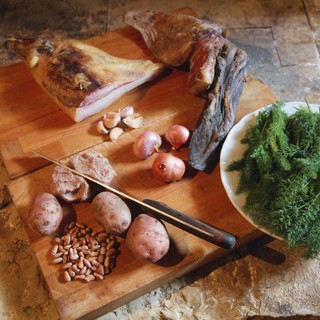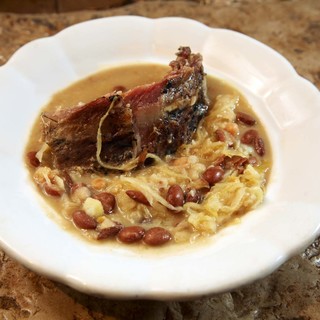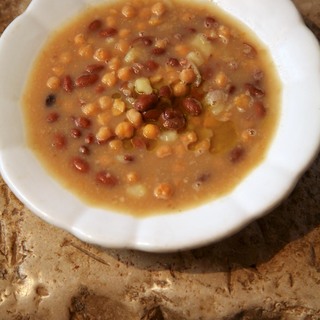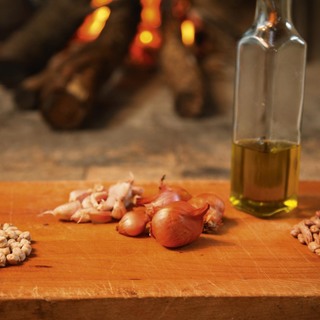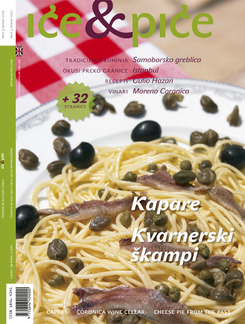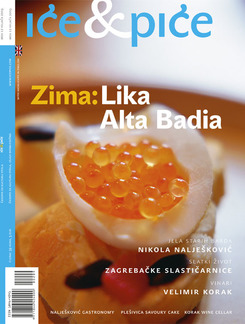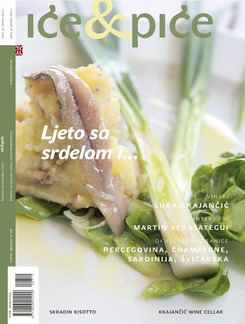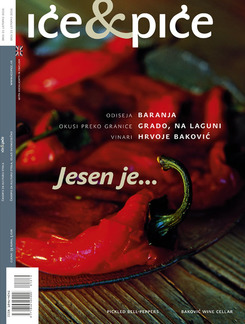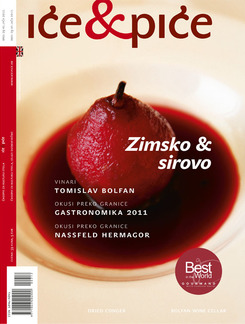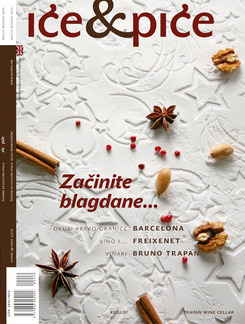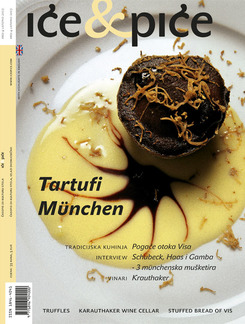Only seldom does some usual and everyday dish creep into the pretty picture of the traditional cuisine. All of them are just cabbage rolls, baked boiled strudels, spit-roasted or bell-baked lamb…
The truth about the marvels with which the old folks regaled themselves is that for a larger part of history, most of them, this way or that, were hungry more often than full. The dishes that really fed generations have been too easily forgotten. I don’t argue for a return of roux soup to the everyday menus, nor do I think it ought to be offered in the restaurants. Still, one has to be aware of the prettification that every impression about the food of yore is subjected. Cabbage and bean and potato in countless versions were the basis of the jog-trot everyday diet of the whole of Europe after the last two centuries. This forced vegetarianism was interrupted for holidays like Christmas and Easter, weddings and family celebrations as well as major works.
Among the famed dishes that represent Istrian cooking today is the modest maneštra. But maneštra is more of a principle for preparing and eating food than a recipe, which in today’s restaurant fare is reduced on the whole to young corn maneštra. In the seasonless rhythm of today’s food the young corn are like to come from a tin, and the complaint about tinned sweet corn is not just petty, but it contains the embedded experience of many other maneštras, unjustly forgotten.
We can say that maneštra was the basic and main Istrian everyday food. Hot and satiating, ample and yet economical – a dish that met the need for the rational modesty of the cuisine of yore. One in which really nothing was thrown away. Every list of traditional recipes of every region or country of the world today inveigles us with its complex and festive dishes. Maneštra though in all its variants is an extremely simple dish; I don’t mean that it is easy to make it as it deserves to be made, but that the recipes for it reveal the simplicity of the philosophy of cooking of long ago. In just one pot, on the fireplace or later on the range, from early morning the dish made out of the ingredients to hand in the house would be quietly seething. It would be put on in the morning, before going out to field work, and the restorative maneštra would be ready without a lot of trouble just in time for dinner. In its one-pot simplicity, and here lies the emblematic importance of maneštra for Istrian food, the rhythm of nature is revealed. In spring they ate dill maneštra, in summer of corn, in winter jota (yota) or maneštra of milled corn. In all of these maneštras we find the same basic ingredients, bean and potato, the big two, and a third, from which the pot would get its name. So Istrian cooking had maneštra made of chickpea, barley, dill, baby corn and – the only one for which the rule of naming did not apply – yota, made of but not called after sour cabbage.
Just as the vegetables in the maneštra keep up with the seasonal diversity, so the cured meats that are traditionally added to it also vary according to the recipe. There were lots of combinations, but those who know claim that the following combinations are authentic: dried pork trotters go in maneštra of barley; chickpea maneštra has ribs; while in spring maneštra of dill, which had its place in the grand menu for Ascension or Whit, the particular flavour was given by cured tongue. The story about maneštra always mentions the same thing, that dried ham bone that was the special ingredient that picked maneštra out from all similar vegetable stews and soups. The bone that was borrowed and lent and used among good neighbours was perhaps just a nice story that tells of the experience of some other world and its dietary strategies in the face of hunger. The nostalgic invocation for the taste of a world that perhaps never existed, in which all food had a real taste, is woven from both memory and forgetting.
Today’s maneštra of young corn, which almost every restaurant and tavern in Istria offers, is the reduced experience of the dietary everyday in Istria for a thousand years. The basic components of the chameleon maneštra, which in its countless versions, tell above all of the hunger that was the first generator of food innovations. Not all products of the New World were met with rejoicing. Maize, potato and tomato fought long for their place of today on the tables of the world. In Istria, potato appeared shyly at the time of French rule, between 1805 and 1814, but only during the time of the Austrian administration of 1813-1814 was it systematically pushed and planted. At first met with repugnance, for its fruit was somehow too close to the infernal regions, it was only during the five lean years of 1812 to 1817 that it earned a place in the maneštra. Recipes for potato did not come from the well-to-do kitchens that usually dictated new fashions in eating, but from the pulpits, where the clerics extolled it as a saviour from famine. Another essential ingredient in maneštra, the bean, totally squeezed out lentils and broad beans, which for at least a millennium had been eaten by the Istrians. From today’s collective dietary memory, the older legumes have been literally wiped out. And so the history of the maneštra on the whole is hidden in the third ingredient, that which gives the dish its name.
The representative of everyday in today’s external impression of Istrian cuisine tells of a diet that is a phenomenon of long existence, of the ability to transform recipes that are constantly adjusted to new tastes and new circumstances. More than other recipes in Istrian cuisine, maneštra claims a place as symbol of constant change, which is always inscribed into food. Traditional food survives in new conditions precisely because of the ability to change, so that in fact one need not complain much about canned corn, rather, one should seem for those places in which it is still possible to find all those modest and yet luxuriant maneštras with which the menus followed the annual rhythm of comestibles. At the end of every search waits a nourishing and timeless maneštra of whatever there might happen to be.

